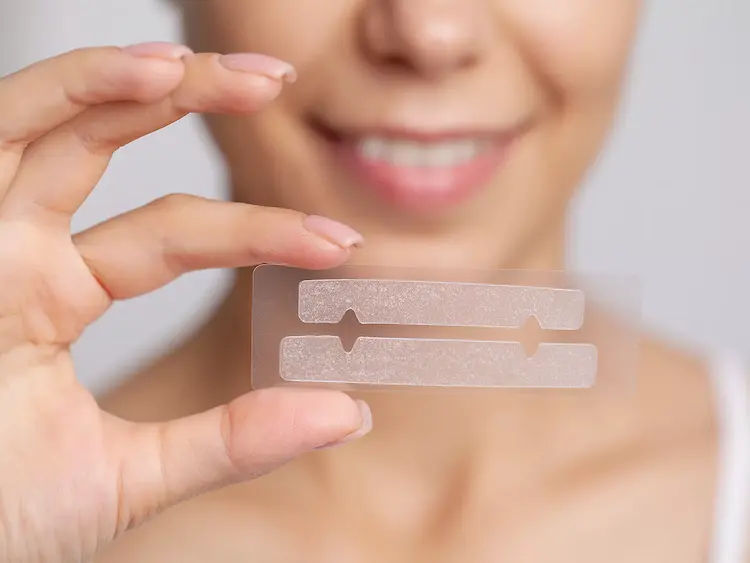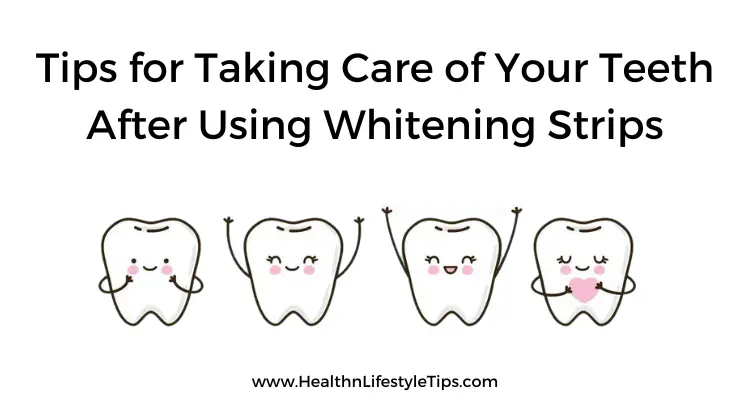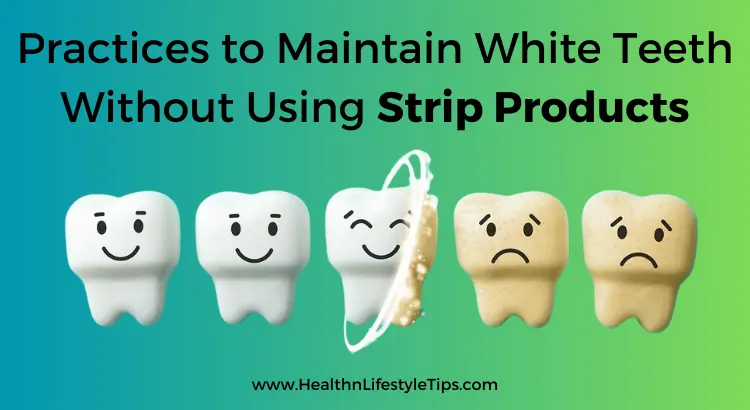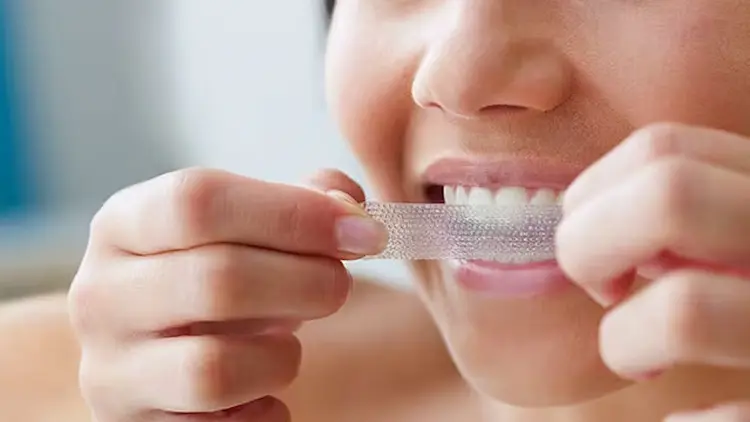If you seek a brighter and healthier smile. Teeth whitening strips can provide an easy solution. However, given the abundance of available options, selecting the best brand for your needs and determining the frequency of use can take time and effort.
This informative piece provides insight into safe and effective application methods. From determining whether these strips align with your dental requirements and lifestyle to outlining how frequently they should be used, we have got you covered. Let’s read on!
Overview of Whitening Strips and How They Work
Teeth are essential to our appearance, and whitening strips offer an easy and convenient way to brighten them up. Whitening strips consist of a thin layer of peroxide gel applied to the teeth. The gel removes surface stains and deep-seated discoloration, revealing a brighter, whiter smile beneath.
The quest for whiter teeth has led many individuals to use whitening strips. One must remember that each brand has its unique way of achieving optimum results, causing estimated completion times to vary significantly.
Additionally, certain persons, predominantly those affected by tooth sensitivity or ongoing oral issues, will unlikely reap benefits from these bleaching agents despite being regarded as reliable and secure if applied appropriately.

How Often Should You Use Whitening Strips?
How often should you use whitening strips? This is an often-asked question to achieve the desired results without causing harm to the teeth. The suggested frequency for whitening strips is typically once a day for two weeks. After that, it is recommended to wait a few months before starting another round of treatment.
When it comes to using whitening strips, remember that moderation is vital for optimal results without harming your teeth. Overusing these products can result in tooth sensitivity or damage to the enamel. So, it is advisable only to use as the manufacturer instructs or under guidance from a dentist if required.
However, remember that achieving overall good dental health requires more than teeth-whitening; regular check-ups with a dental professional and good oral hygiene habits should be part of one’s everyday routine for long-term success.
Differences Between Professional Whitening Treatments and Whitening Strips
Having a bright, radiant smile can improve our confidence and overall appearance. With many options available today, knowing the differences between professional teeth whitening treatments and whitening strips is essential.
Professional treatments are typically performed in a dental office and administered by a licensed professional, while strips can be purchased over the counter and applied at home. Professional treatments generally offer faster and more dramatic results, while whitening strips may take a few weeks to see noticeable improvements.
Additionally, professional treatments are usually more expensive than strips, but many feel the benefits justify the cost. Choosing these two methods ultimately depends on personal preferences, budget, and goals.
Tips for Taking Care of Your Teeth After Using Whitening Strips

Using whitening strips can give your teeth a bright and beautiful smile, but it’s essential to take proper care of them afterward.
After using whitening strips, it’s best to avoid consuming dark-colored foods or drinks for at least an hour to prevent staining. Stick to eating foods that are lighter in color, such as chicken or rice, to maintain your newly brightened teeth.
Additionally, brush your teeth at least twice daily with fluoride toothpaste, floss daily, and use mouthwash to keep your mouth clean and healthy. Consistently following these tips can help keep your teeth looking their best long after using whitening strips.
Common Signs That You Should Stop or Reduce the Usage of Whitening Strips
Using whitening strips can be a quick and convenient way to brighten your smile, but it’s essential to be aware of the signs that it’s time to cut back or stop usage altogether. One common indication that you may need to reduce or cease the use of whitening strips is tooth sensitivity. If you experience discomfort or pain while using the strips, it’s a clear sign to take a break and consult your dentist.
Another red flag is gum irritation or discoloration. If your gums are becoming red, swollen, or tender after using the strips, or if you notice any abnormal discoloration, it’s best to discontinue use and speak with your dental professional.
Finally, if you’re not seeing any improvement in the shade of your teeth after several weeks of regular use, it’s time to give your teeth a break to prevent any potential damage. Attention to these signs can help you use whitening strips safely and effectively.
Best Practices to Maintain White Teeth Without Using Strip Products

Keeping white teeth is essential for a confident and healthy smile. While strip products are popular, other effective ways exist to maintain pearly whites without them. The first step is to watch what you eat and drink. Beverages such as coffee, tea, and wine are notorious for staining teeth.
Limiting consumption, or at the very least, rinsing your mouth with water after can help. Additionally, incorporating more fruits and vegetables into your diet can help keep those teeth clean. Using an electric toothbrush and flossing daily are also crucial habits for maintaining white teeth.
Lastly, scheduling regular dental cleanings can remove stubborn surface stains and give your teeth a clean slate. With these tips, you can achieve and maintain a bright, confident smile without using strip products.
Determining the Ideal Frequency for Whitening Strips

How Often Can You Use Whitening Strips
Whitening strips offer a simple solution for a brighter smile. Typically, they’re used once a day for two weeks. After that, it’s recommended to wait a few months before starting another round to prevent sensitivity or enamel damage. Following the manufacturer’s instructions is crucial for safety and effectiveness.
How Often to Use Whitening Strips
For best results without harming your teeth, it’s generally advised to use whitening strips once a day for two weeks. After that, take a break for a few months before considering another round. Following usage instructions carefully is key to avoiding potential side effects.
How Often Should I Use Whitening Strips
To achieve a brighter smile safely, use whitening strips once a day for two weeks, then wait a few months before starting another cycle. Overuse can lead to tooth sensitivity or enamel damage, so following recommended usage guidelines is essential for optimal results and oral health.
How Often Can You Use Teeth Whitening Strips
Teeth whitening strips are typically used once a day for two weeks. After completing a treatment cycle, it’s best to wait a few months before considering another round to prevent potential side effects. Following usage instructions diligently is crucial for safe and effective whitening.
In Conclusion
Overall, whitening strips can be a fantastic, accessible way to keep your teeth looking their best. When making decisions about our health, we must take a strategic approach. That means thoroughly reviewing the guidelines for teeth whitening strips and regarding risks and side effects.
By weighing this information carefully, we can determine if these products align well with our individual needs and decide on their optimal frequency of use. For those looking for a safe and convenient way to brighten their smiles, whitening strips may be a solution worth considering; just be sure to take all precautions beforehand. So, don’t wait; try using whitening strips today.
